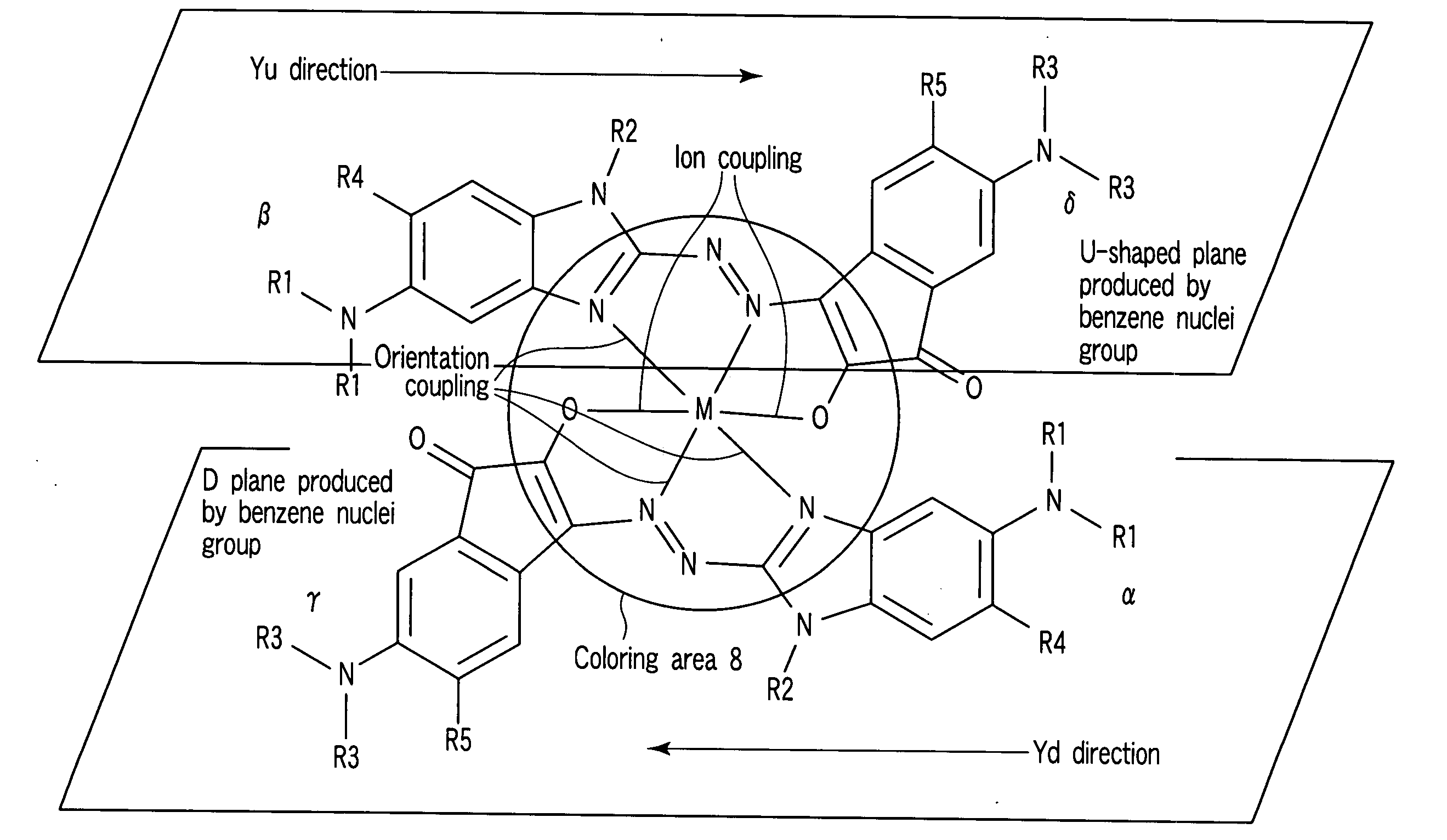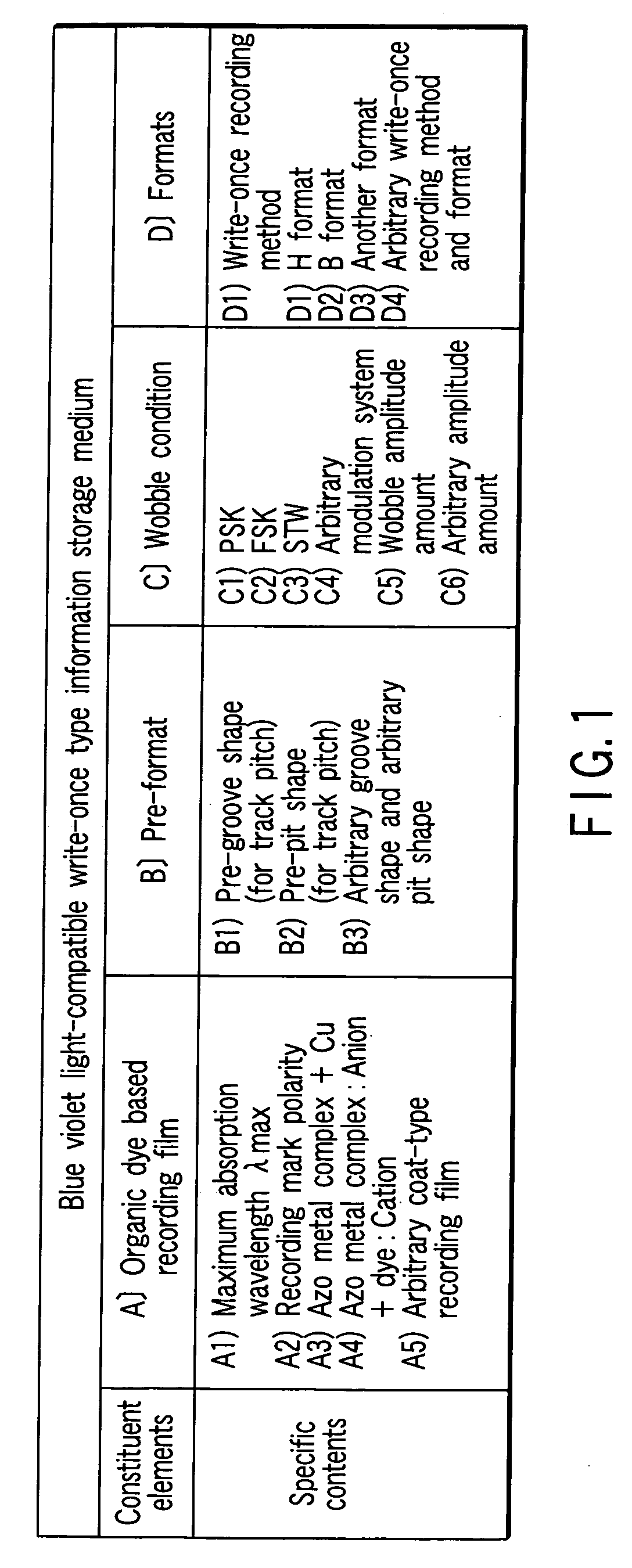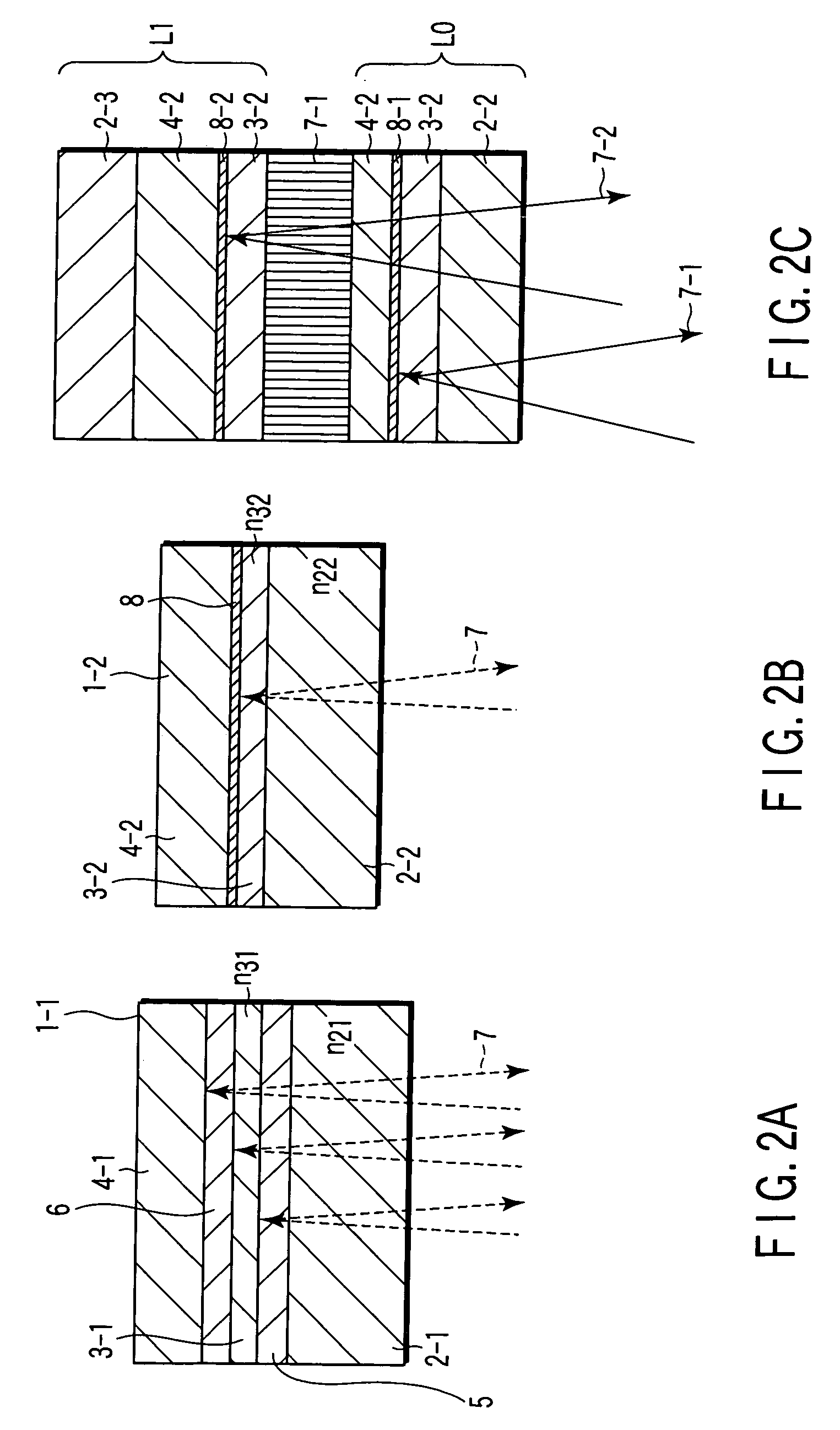Storage medium, reproducing method, and recording method
a technology of reproducing method and storage medium, which is applied in the field of storage medium, can solve the problems of insufficient reproduction durability count of conventional storage medium using organic dye material, inability to obtain practically sufficient recording and reproducing characteristics by using light beams having such a short wavelength, etc., and achieves high density, high speed recording, and improved recording sensitivity
- Summary
- Abstract
- Description
- Claims
- Application Information
AI Technical Summary
Benefits of technology
Problems solved by technology
Method used
Image
Examples
example 1
[0942] In example 1, a one-sided single layer storage medium was produced, and testing was carried out. Au was used as an additive element of an Ag-alloy reflection film; four types 0.05 at %, 1 at %, 2 at %, and 5 at % were used as additive amounts; and three types (1), (2), and (3) were used as organic dye materials for recording films. In order to cover all combinations of amounts of additive elements and dye materials, all combinations, 12 types of storage mediums were produced, and evaluation of the recording and reproducing characteristics were carried out. FIG. 126 specifically exemplifies constitutions of reflection films and combinations of organic dye materials for recording films.
[0943] When the characteristics (a) to (e) of the produced storage mediums were evaluated, the evaluation results were obtained as shown in FIG. 127.
[0944] As is evident from these results, each of the storage mediums achieved the target values; SbER of 5.0×10−5 or less; PRSNR of 15.0 or more; ...
example 2
[0945] In example 2, one-sided single layer and double layer storage mediums were produced. Bi was used as an additive element of an Ag-alloy reflection film; four types 0.05 at %, 1 at %, 2 at %, and 5 at % were used as amounts of additives; and three types (1), (2), and (3) was used as organic dye materials for recording films. As in example 1, 12 combinations of storage mediums were produced, and evaluation of recording and reproducing characteristics were carried out. With respect to the one-sided double layer storage medium, a medium whose Bi additive amounts are 0.05 at % and 1 at % was produced, and with respect to the one-sided single layer storage medium, a medium whose Bi additive amounts are 1 at %, 2 at %, and 5 at % was produced, respectively, and evaluation was carried out. FIG. 128 specifically exemplifies constitutions of reflection films and combinations of organic dye materials for recording films.
[0946] When the characteristics (a) to (e) of the produced storage ...
example 3
[0948] In example 3, as in example 1, a one-sided single layer storage medium was produced. Ca was used as an additive element of an Ag-alloy reflection film; four types 0.05 at %, 1 at %, 2 at %, and 5 at % were used as amounts of additives; and three types (1), (2), and (3) were used as organic dye materials for recording films. As in example 1, 12 types of storage mediums were produced, and evaluation of recording and reproducing characteristics were carried out. Each of the storage mediums achieved the target values; SbER of 5.0×10−5 or less; PRSNR of 15.0 or more; modulation of 0.4 or more; reflectivity of 14% or more; and read stability of 1,000,000 times or more. Therefore, each of the storage mediums obtained “good” characteristics.
PUM
 Login to View More
Login to View More Abstract
Description
Claims
Application Information
 Login to View More
Login to View More - R&D
- Intellectual Property
- Life Sciences
- Materials
- Tech Scout
- Unparalleled Data Quality
- Higher Quality Content
- 60% Fewer Hallucinations
Browse by: Latest US Patents, China's latest patents, Technical Efficacy Thesaurus, Application Domain, Technology Topic, Popular Technical Reports.
© 2025 PatSnap. All rights reserved.Legal|Privacy policy|Modern Slavery Act Transparency Statement|Sitemap|About US| Contact US: help@patsnap.com



